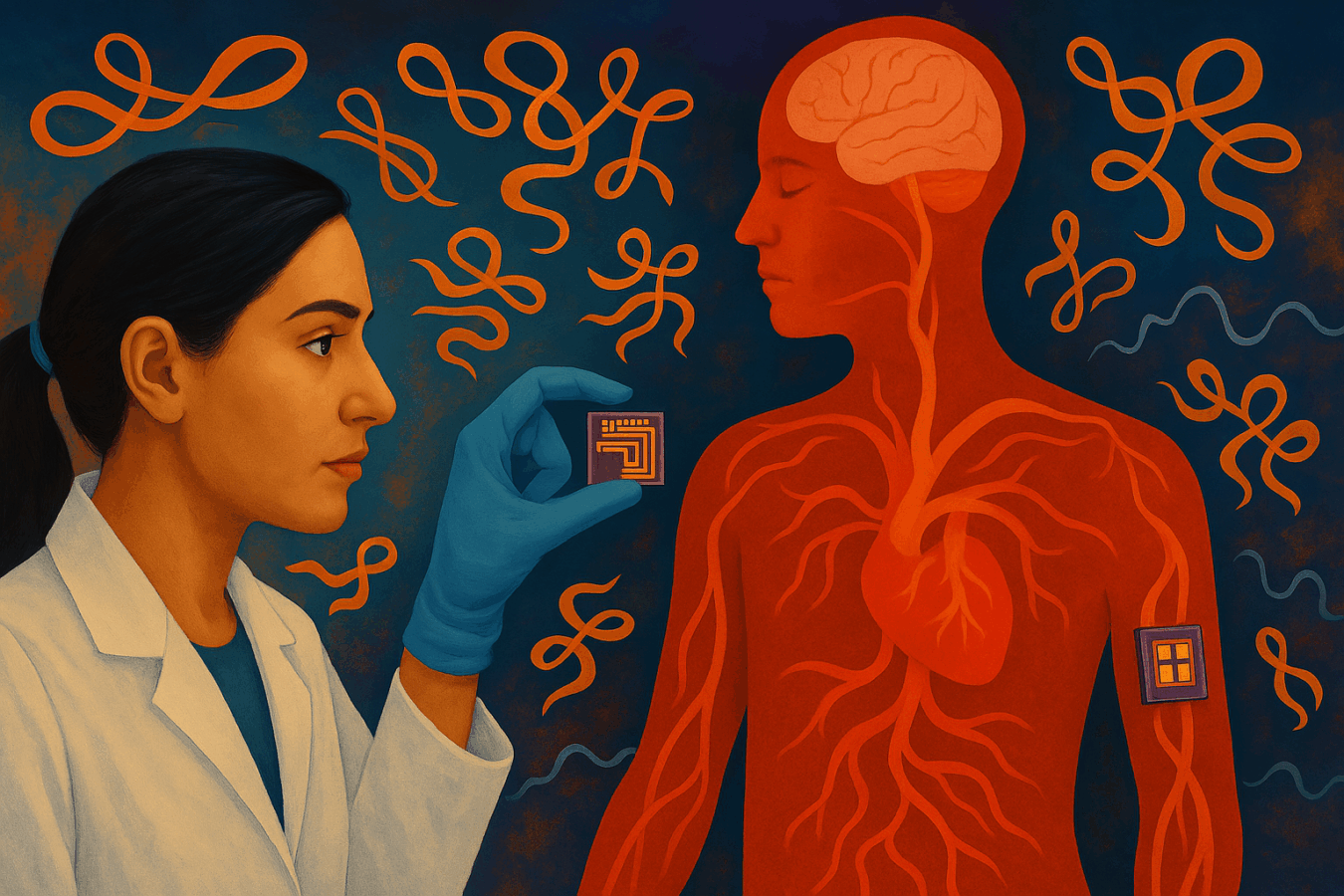Stress is a silent force impacting human health. In addition to roles in mental health, stress is linked to diabetes, heart disease, cancer, and neurodegenerative disorders through chronic inflammation. But while existing stress monitors rely on measurements of heart rate and other nonspecific indicators, UCLA researchers are pioneering an approach to studying stress at its molecular roots.
Supported by the National Institutes of Health and the Simons Foundation, mathematician Andrea Bertozzi and chemist Anne Andrews have developed an innovative method to identify aptamers—synthetic DNA-based receptors. Their work, recently published in Mathematical Biosciences, is opening new avenues for individuals and healthcare providers to quantify stress to improve health and wellness.
Chemistry and Math Come Together
The project began when Andrews approached Bertozzi with a challenge: to develop a faster, more reliable method for identifying aptamers. These rare synthetic DNA sequences fold into unique shapes, allowing them to bind specifically to target molecules. However, discovering the right aptamer for a given application can be fraught with failure, like searching for a needle in a haystack.
Bertozzi, who hadn’t taken a chemistry class herself since high school, addressed this challenge by integrating advanced machine-learning concepts. Inspired by techniques like subgraph matching, Bertozzi and two PhD students (Matthew Tyler from UCLA and Paolo Climaco, PhD Univ. of Bonn 2025) developed GMfold, an algorithm capable of predicting the secondary structures of thousands of DNA sequences within seconds. Beyond speed, GMfold improves on existing software by significantly enhancing the ability to classify and, therefore, explore an intractable number of aptamer candidates generated through laboratory selections.
“It’s exciting to see how mathematics can directly contribute to solving pressing medical challenges. It’s a testament to the power of collaboration and shared knowledge,” said Bertozzi.
In the spirit of collaboration and shared knowledge, the team made GMfold open-source, allowing researchers worldwide to leverage the tool for their own studies. “This collaboration between chemistry and mathematics has opened new directions in aptamer research, enabling much larger sequence spaces to be explored,” Andrews says. “We’ve taken an overwhelming problem and turned it into a practical, scalable solution.”
A Sensor for Stress
The researchers’ first success has already demonstrated the transformative potential of their approach. Using the Bertozzi machine learning workflow, Andrews’ graduate student, Noelle Mitchell (UCLA Ph.D. 2025), identified aptamers capable of distinguishing two nearly identical stress hormones: epinephrine and norepinephrine. Norepinephrine, epinephrine, and cortisol, for which Andrews also developed a sensor, are critical mediators of the body’s stress responses. It has long been challenging for sensors to differentiate and detect these hormones and transmitters at their naturally occurring low levels.
This breakthrough is leading to wearable devices that will be used to monitor stress biochemistry, offering a more precise understanding of how stress impacts an individual’s unique physiology. “Chronic stress predisposes certain people to serious health issues, from anxiety to cardiovascular disease,” Andrews explains. “To truly understand its impacts, we need tools that go beyond overly general indicators like heart rate. This technology brings us closer to that goal.”
Beyond stress, the aptamer design process has wide-ranging potential for creating biosensors capable of detecting a range of human health biomarkers, including female reproductive hormones, which opens doors to advances in diagnostics and personalized medicine.
Critical Funding Support
As government funding for science is under greater threat than ever before, this work highlights the critical role of federal agencies, such as the NIH and NSF, in supporting groundbreaking basic and translational research. By helping to foster interdisciplinary collaboration, the Simons Foundation Math + X program further enabled Bertozzi (Applied Mathematics and Mechanical & Aerospace Engineering) and Andrews (Chemistry & Biochemistry, Psychiatry, and Bioengineering) to work together on tackling fundamental challenges at the boundary between mathematics and chemistry.
“Our goal isn’t just to create a stress sensor,” Andrews says. “It’s to open new frontiers in medical science and personalized health monitoring, using aptamers to detect a wide range of biochemical markers. This is just the beginning.”
As this interdisciplinary team continues to develop and refine their methods, their work signals a paradigm shift in diagnostics and personalized medicine—made possible by the intersection of mathematics and chemistry, and through NIH-supported aptamer sensor discovery and development.
